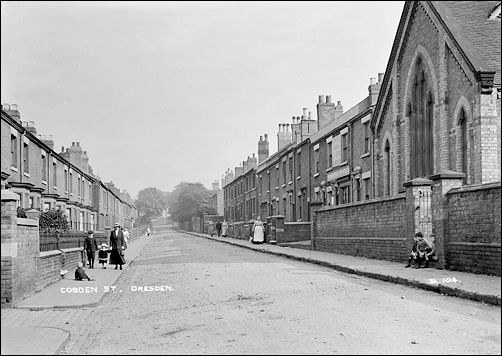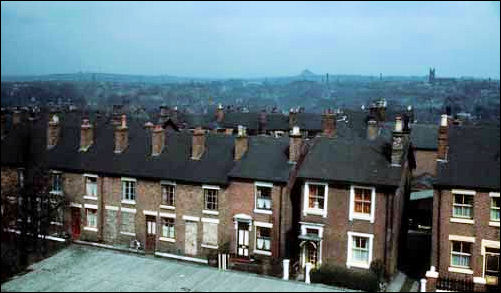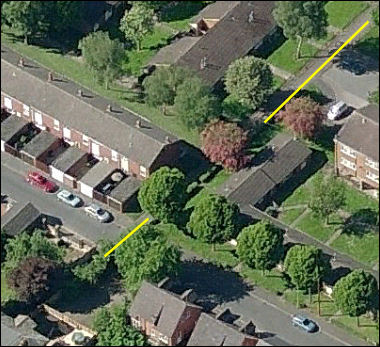|
Bridle Path, Dresden,
Longton
Cobden Street
Cobden Street was named after prominent
MP Richard Cobden (1804-1865), founder of the
Anti-Corn Law League.

Date: 1900 - 1940 (c.)
the bridle path is on the right, just behind the
group of 3 people on the pavement - it can be identified by the gap in
the houses.
This photograph shows the
newly built Cobden Street in Dresden when the town of Longton was still
prospering and expanding its suburbs.
Beyond the trees at the top of the street and out of view is Florence
Colliery, an industrial scene that this image belies. Notice the small
frontages and bay windows on the left closest to the photographer. This
would have classified this part of the street as 'white collar', whilst
the other houses without bay windows would have been for those further
down the social scale. Note also the small off-licence and chapel, both
very important features in an Edwardian middle class area.
The church building on the
right was the Methodist New Connexion Chapel. The Elim Chapel on the
corner of Cobden Street and Carlisle Street now stands on this site.
from the Blake Collection (Staffordshire Past Tracks)
the photographer Blake lived in Cobden Street

Cobden Street - photo taken from a large house Ricardo
Street
The bridle path can be clearly seen.
Date: 1971
Cobden, Richard
(1804-1865), British economist and statesman, known as the Apostle of
Free Trade.
Cobden was born in Sussex on June 3, 1804. At the age of
15 he went to work in London for his uncle, a calico merchant, and in 1828
he established an independent calico business with some friends. His
philosophy of free trade was first apparent in two pamphlets he wrote,
England, Ireland, and America (1835) and Russia (1836).
In 1838 he joined with the British statesman
John Bright
and five other merchants to found the
Anti-Corn
Law League.
As part of a campaign to decrease the cost of living, the league agitated
for repeal of the corn laws. Cobden successfully stood for election to
Parliament in 1841 to work for repeal of the corn duties, which was
effected in 1846.

The line of the bridle path as it crosses Cobden
Street.
by the 1970's many of the terrace houses in Cobden Street were
demolished and replaces with new buildings.
|